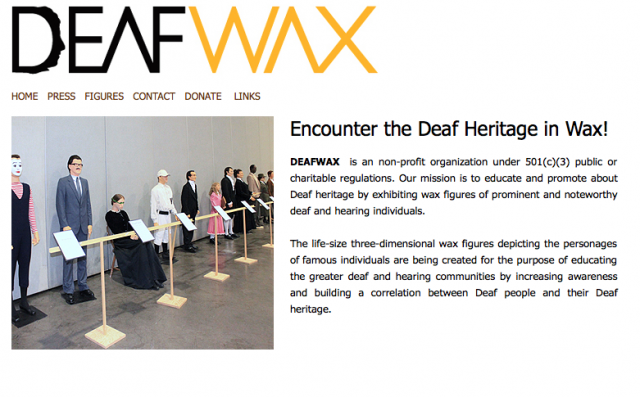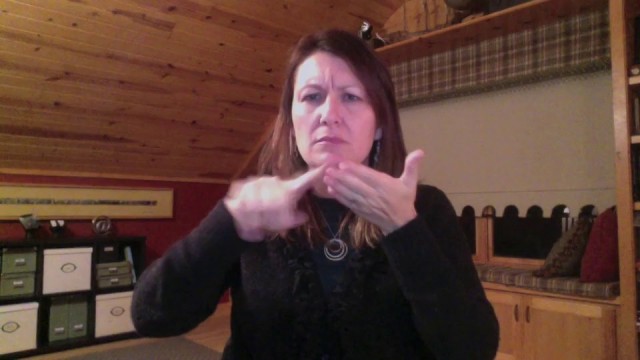Originally appeared in Silent News, December 2001.
In 1982, deaf-owned mail order businesses primarily consisted of selling TTYs and decoders. Today, these businesses sell everything from TTYs to pagers to books to posters to, yes, even signing stuffed animals. “In the beginning, TTYs were very ‘hot-selling.’ At that time, there was no such state equipment distribution programs to give away free TTYs. The deaf community had substantial economic clout,” Bob Harris remembers.
Bob is the man behind Harris Communications, a deaf-owned mail order business celebrating its 20th anniversary in 2002. The business started in the basement of Bob’s townhouse in Fridley, Minn., a far cry from its facilities today in Eden Prairie, Minn.
To understand how Harris Communications has reached its 20th anniversary, one must learn about Bob Harris. Bob has long been a champion for deaf rights, deaf empowerment and deaf entrepreneurship. But very few people know that he also has a doctorate in clinical psychology; that he was an athlete in high school; and that his father was also a businessman.
Bob was born in Chicago, and his family moved to Milwaukee immediately afterwards. A bout with spinal meningitis left Bob profoundly deaf at the age of eight months, but he was not diagnosed until two years of age. Upon discovering his deafness, Bob was immediately enrolled in speech therapy and his mother became involved with a correspondence course offered through the John Tracy Clinic. Bob eventually attended a public school in Shorewood, Wis., a suburb of Milwaukee, where he was mainstreamed for a few classes but spent most of his time in “deaf” classes.
“When I went to Shorewood High School, I was fully mainstreamed. I did not have any interpreter or notetakers at all,” Bob wrote in a 1989 Deaf American article. “I did not understand regular teachers at all. I was really bored and very restless… I was very angry. I often complained to my parents about how much time I had wasted in regular classes.”
At Shorewood High, Bob lettered in several sports, including basketball, cross-country, track and football. “My excellence in sports gave me a sense of confidence and an opportunity to win the respect and friendship from hearing classmates,” he wrote in Deaf American.
After high school, Bob visited Gallaudet College (now University). There, he was blown away by the accessibility of communication. “I did not know sign language at that time – I had too much pride as an oralist,” he wrote. He decided to attend Lake Forest College instead because he had heard that another deaf student was attending the college as well. After a difficult four years, he graduated with a degree in psychology. During this time, Bob was introduced to Dr. McCay Vernon, a well-known psychologist, in 1968. “For the first time in my life, I had someone to look up to… I did not have any career education at all. I told Dr. Vernon about my dream of becoming a superintendent. He warned me that hearing people might not be ready to accept a deaf person as a superintendent.” Vernon instead suggested that Bob think about becoming a psychologist, and they discussed the possibility of Bob attending Gallaudet as an exchange student to learn about deaf culture and the deaf community.
Bob did just that, attending Gallaudet for one semester in the fall of 1969. After graduation from Lake Forest with honors and being elected to Phi Beta Kappa, Bob attended New York University for a five-year doctoral program in clinical psychology – this time, with interpreting services. Completing his courses in 1973, he relocated to Rochester, N.Y., to work as a psychology intern, where he completed his doctoral studies in 1976. He was lured to Minnesota with a position at St. Paul-Ramsey Medical Center, where he worked as a clinical psychologist.
So how did Bob go from being a high school athlete to a well-educated psychologist to company owner? Throughout his studies, Bob had always had a personal interest in business and economics. He credits this interest to his father’s business marketing experience. “I picked up a lot of things which contributed to my pre-business personality traits,” Bob remembered. “In 1959, my father established his own entrepreneurship as the president of a new lumber company.”
Bob worked for his father during his high school and college years. “I learned very quickly that there was no future for me as a business man. My speech was never intelligible. There were no TDDs, interpreters, dual message systems, or television decoders… I did not see how I could communicate with hearing customers or hearing employees at my father’s office,” his Deaf American article said.
While at St. Paul-Ramsey Hospital, he began to become more serious and expand on his interest in finance and stock investing. To help ease communication barriers, Bob asked his stockbroker and real estate partner to purchase TTYs – and they asked him to find a discount. Bob called Krown Research to see if he could get a discount for quantity orders. Krown then suggested that he become a TTY dealer to receive a ten-percent discount. This was only a side job for Bob – nowhere near even a part-time job. However, he got laid off from his psychologist position, and eventually went through a series of mundane jobs. Suddenly, Bob began to receive more and more orders for TTYs without really knowing the reason, so he decided to devote more time to the business. During this time, he studied trade shows, developed flyers and marketing materials, packed and shipped orders, and even performed bookkeeping.
To alleviate the issue of voice calls, Bob contracted with a private service that had a TTY as part of a dual message relay service. Voice calls were forwarded to his answering service. The small, part-time order business became officially the TTY/TDD Distributor of Minnesota in 1982.
Even so, Bob was never satisfied with his business. He knew there was room for growth, room for increase in revenue. He continued his studies of trade shows and other businesses. But one frustration persisted: the phone calls he had to handle. “I knew that I could solve it by hiring an interpreter or a hearing secretary answer voice calls for me, but it would cost me a lot of money. One way or another, I knew I had to make a decision whether to undertake a risk and contribute my monies to business to hire a hearing person and hope to expand my business. I decided to go for it,” Bob wrote.
In 1985, he subcontracted with a handicraft store to rent a warehouse and pay the personnel on a monthly fee to handle phone calls and orders. Eventually, the company grew and he changed the name to Harris Communications in November 1985. For several years, he continued to practice psychology in the afternoons while running Harris Communications.
Today, the company has 32 employees, and Bob has no time to practice psychology anymore. Bob is pensive about the changes he has seen over the past twenty years in the area of technology and what he calls “deaf economic clout.”
By economic clout, he refers to the power to help control the deaf market in TTYs, decoders, pagers and other necessary devices. Initially, TTYs were the best selling device – then closed captioning decoders began selling in the early 1980s. “It added further to the deaf community’s economic clout. Since deaf people had to pay for both the TTYs and the decoders, they were really empowered,” Bob explained. “They had to make their own budget priorities so that they could save sufficient monies to purchase these devices for independent living.”
Then statewide distribution programs began providing TTYs and other devices at no or low cost, and Bob feels this impacted that clout greatly. With the growth of these programs, in addition to government regulations requiring that all TVs bigger than 13 inches have built-in captions. “As a result,” Bob said, “There were less opportunities for deaf business owners and deaf customers to interact with each other.”
However, Bob feels that the growth of technology in the past five years has brought the shift back onto deaf buying power, with mainstream companies taking advantage of the two-way pager phenomenon and with deaf people becoming employed in the technology sector. “There also has been a boom interest in many deaf communities to host deaf entertainment trade shows, creating a new era of entertainment for the deaf community who enjoy looking at new products, attending entertainment shows, socializing with old friends and meeting new faces, building up a sense of deaf pride, and participating in door prize contests.”
Bob cites milestones such as the move from the basement to the office, as a big transition, in addition to the marketing efforts the company undertook in 1991 when they began using a one-stop catalog rather than leaflets for advertising. “Previously, we had to make copies of different brochures from different suppliers and put them together in mass mailings. This transition [to the catalog] allowed our company to create a new corporate image as a one-stop shopping source.”
However, this doesn’t mean Harris Communications doesn’t have more plans for the future. “We hope to continue the Harris tradition of providing excellent customer services while searching for good quality products that are user-friendly,” Bob said.
“I founded my business in serving the deaf community because I love working with the deaf people and, eventually in later years, the hard of hearing community. My business would never have been what we are now, without ongoing and loyal support from these communities For this part, I salute to them for their economic clout.”
Bob sees a bright future for both Harris Communication and the deaf and hard of hearing communities. “Thanks to the [Americans with Disabilities Act] regulations and Internet-based technology as a powerful tool in closing gaps between deaf and hearing communities with respect to information dissemination and telecommunication, the future is bright for deaf people to pursue in establishing entrepreneurships. In doing so, we will see more economic clout in the deaf community.”
Copyrighted material. This article can not be copied, reproduced, or redistributed without the written consent of the author.


